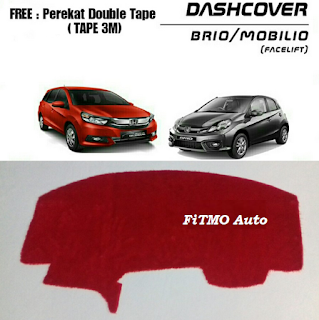Toyota admits that this is the most recognisable model in its line-up.It commands even more hushed respect than the Pajero, especially among the Bollywood community, and its finally here, ready to trample its super-SUV rivals.
We have been offered the smaller and newer of the two Land Cruisers — a genuine off-roader, with old-world body-on-frame construction, switchable four-wheel drive and a pair of huge engines. There’s an excellent diesel on its way, but for now, Toyota has launched only a massive 4.0-litre V6 petrol, which has a fearsome 235bhp and 36.9kgm of pull
What you notice first is the Prado's size: it looms menacingly over everything else on the road. The big, toothy grille, subtle-but-evident body armour and the sheer volume of the car are enough to scare off all other road users. The downside is that the Prado feels cumbersome through traffic and nerve-racking to park, accentuated by the wide turning circle.
The cabin, too, is excellent, with the kind of ambience you'd expect from a luxury car. The huge dashboard, large Multiple Information Display and chunky fittings feel very reassuring, and the seats are wide and comfortable. Also, very little noise filters through, and it's very well kitted, with a full range of airbags, dual-zone climate control and heated, powered seats. Third-row comfort isn’t great, though. Thankfully, everything is perfectly bolted down and made of top-quality material.
The real ace in the Prado's deck is the engine: it is massively powerful, and creamy-smooth at the same time. The power delivery, through a four-speed automatic, is linear and the engine very responsive; there is so much power in reserve that you'll probably never use more than 20 percent of it during normal driving. However, fuel economy is dismal.
The air-suspension has variable ride height for off-roading, and two settings — Comfort and Sport. Switch between from the soft, quiet Comfort mode to Sport, and you feel the difference immediately, the ride getting firmer, body roll getting better contained. Other gizmos include Hill Descent Control and Downhill Assist Control, which shows how serious it is about mud plugging.
The full Comfort setting is very soft; it's cloud-smooth on good tarmac, but show it ripply concrete and it gets wobbly. Potholes are simply squashed under the mass, but speedbreakers can be jarring, particularly at the rear. The ‘Sport’ setting, though, irons out this final niggle.
We can’t help liking the Prado — a big, powerful and luxurious SUV is always hard to resist — and that’s what Toyota is hoping too. Unfortunately, its on-road abilities don’t match those of the Pajero and forthcoming Mercedes M-class, and the petrol, though excellent, may turn off some buyers. Then there’s the price: Rs 40 lakh. Sure, it’s super-reliable, an ultra-famous brand and backed by great service, but is the price just a bit too steep?
We have been offered the smaller and newer of the two Land Cruisers — a genuine off-roader, with old-world body-on-frame construction, switchable four-wheel drive and a pair of huge engines. There’s an excellent diesel on its way, but for now, Toyota has launched only a massive 4.0-litre V6 petrol, which has a fearsome 235bhp and 36.9kgm of pull
What you notice first is the Prado's size: it looms menacingly over everything else on the road. The big, toothy grille, subtle-but-evident body armour and the sheer volume of the car are enough to scare off all other road users. The downside is that the Prado feels cumbersome through traffic and nerve-racking to park, accentuated by the wide turning circle.
The cabin, too, is excellent, with the kind of ambience you'd expect from a luxury car. The huge dashboard, large Multiple Information Display and chunky fittings feel very reassuring, and the seats are wide and comfortable. Also, very little noise filters through, and it's very well kitted, with a full range of airbags, dual-zone climate control and heated, powered seats. Third-row comfort isn’t great, though. Thankfully, everything is perfectly bolted down and made of top-quality material.
The real ace in the Prado's deck is the engine: it is massively powerful, and creamy-smooth at the same time. The power delivery, through a four-speed automatic, is linear and the engine very responsive; there is so much power in reserve that you'll probably never use more than 20 percent of it during normal driving. However, fuel economy is dismal.
The air-suspension has variable ride height for off-roading, and two settings — Comfort and Sport. Switch between from the soft, quiet Comfort mode to Sport, and you feel the difference immediately, the ride getting firmer, body roll getting better contained. Other gizmos include Hill Descent Control and Downhill Assist Control, which shows how serious it is about mud plugging.
The full Comfort setting is very soft; it's cloud-smooth on good tarmac, but show it ripply concrete and it gets wobbly. Potholes are simply squashed under the mass, but speedbreakers can be jarring, particularly at the rear. The ‘Sport’ setting, though, irons out this final niggle.
We can’t help liking the Prado — a big, powerful and luxurious SUV is always hard to resist — and that’s what Toyota is hoping too. Unfortunately, its on-road abilities don’t match those of the Pajero and forthcoming Mercedes M-class, and the petrol, though excellent, may turn off some buyers. Then there’s the price: Rs 40 lakh. Sure, it’s super-reliable, an ultra-famous brand and backed by great service, but is the price just a bit too steep?
 RSS Feed
RSS Feed Twitter
Twitter






 Friday, February 25, 2011
Friday, February 25, 2011
 Samipodo
Samipodo

0 komentar:
Post a Comment